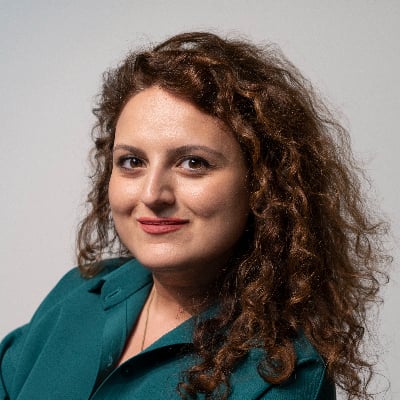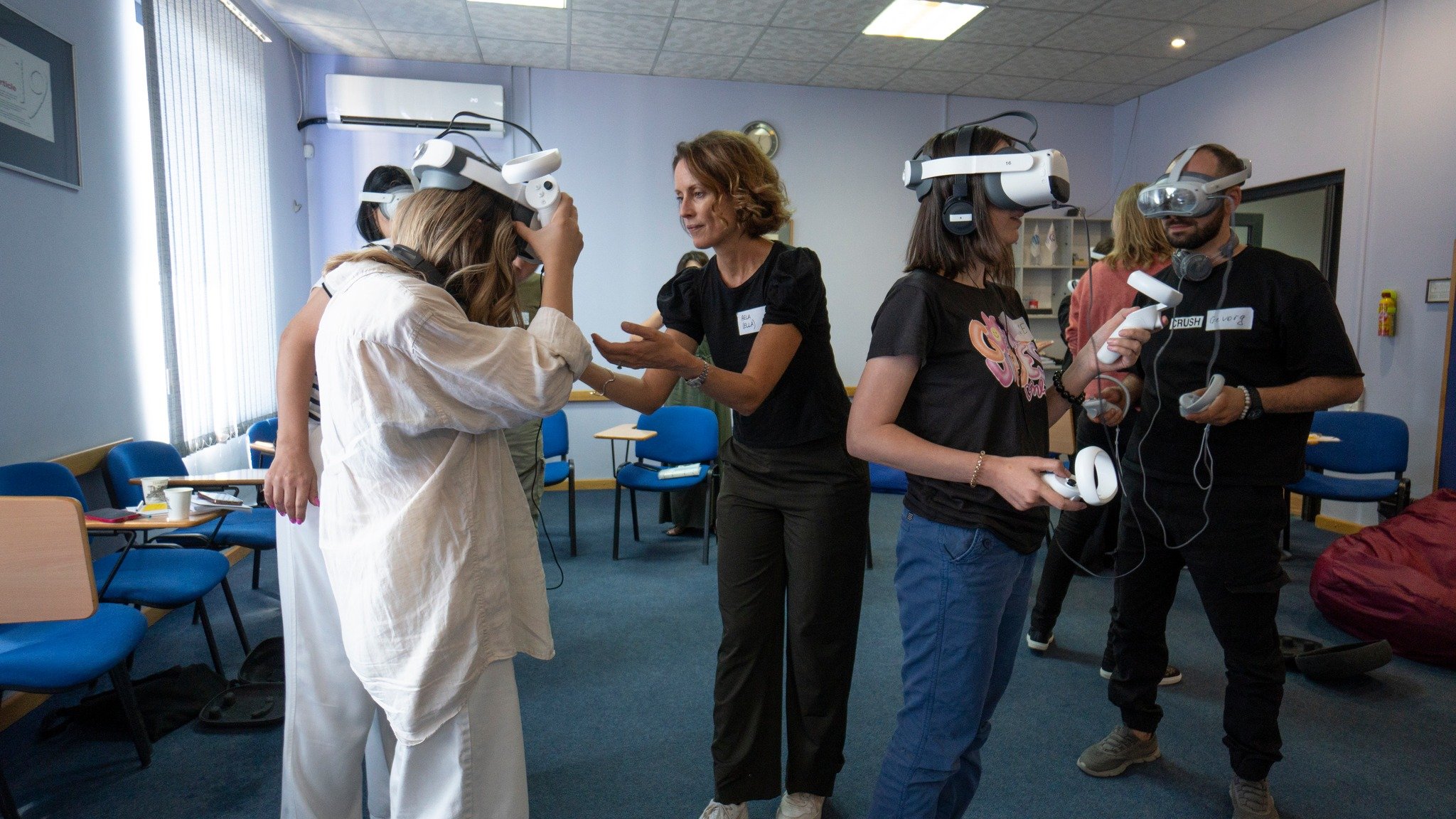Appear in a virtual reality emergency, follow your emotions, assess risks, and adhere to safety rules while covering material and performing journalistic duties.
To enhance the skills of journalists working in crisis situations, the Media Initiatives Center (MIC) organized a safety training course for journalists. Accordingly, the journalists who participated in the course became trainers, conducting training sessions within their editorial offices and for various journalistic groups.
“We began considering the necessity for consistent and ongoing training to promote journalists’ safety following the 2020 war. Media outlets and individual journalists reported on the war relying solely on their physical and psychological capacities. It became obvious that the journalist community required instruction on how to be prepared to operate in emergencies, both physically and mentally, as well as in terms of risk assessment,” stated Narine Safaryan, head of the training department at the Media Initiatives Center.
The journalist-trainer training program was developed after studying international experience and conducting surveys to understand the needs and challenges faced by newsrooms. To provide participants with hands-on experience in crises and equip them with the necessary skills, trainers used VR devices to aid in the training process.
“During the course, the participants experienced two emergency situations using VR devices. The first situation involved the work of journalists during a protest. In this episode, the participants were not actively involved but rather observed the events around them. This provided an opportunity for self-reflection and understanding of one’s reactions in a given situation and assessing potential risks. The second situation was related to digital security,” Narine explains.
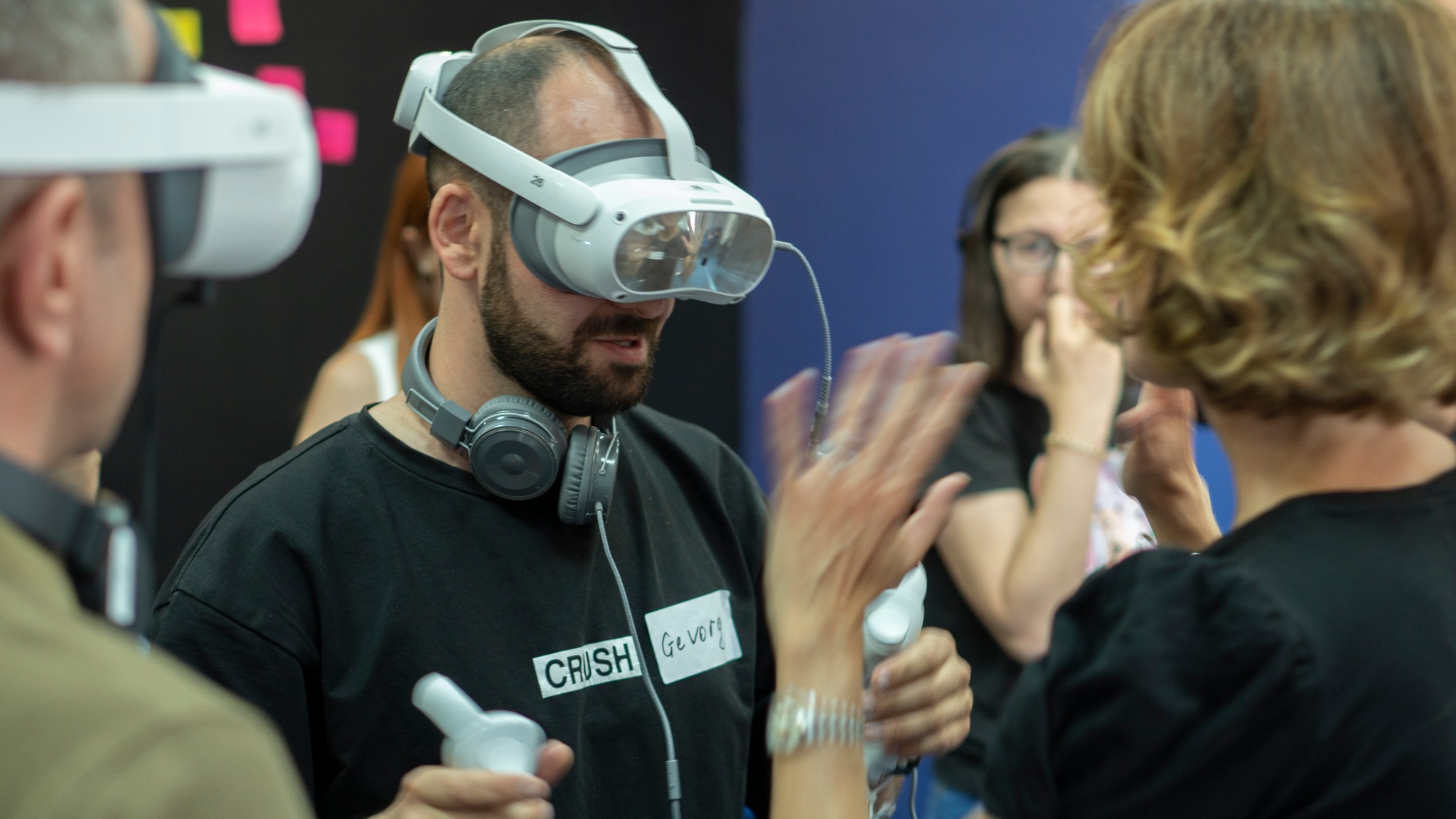
The participants during the safety training for journalists.
MIC has collaborated with the internationally recognized organization Head Set to implement modules and devices related to the safety of journalists in virtual reality.
The group of 15 journalists in Armenia underwent a four-day training course led by Head Set representatives. The group extensively studied first aid skills and protocols throughout the four-day course.
Infocom website journalist Hayarpi Baghdasaryan notes that the transition from virtual reality to real-life scenarios during the course was highly engaging and turned into reaction training.
Hayarpi recounted an intense and emotional moment during the VR protest where the protesters struck a virtual operator colleague. After the incident had subsided and Hayarpi removed her VR glasses, she discovered an actual injured person lying next to her. In that heightened emotional state, she realized she had to offer immediate first aid to the victim.
According to Hayarpi, working with practical first aid cases closely resembling reality helps develop physical and subconscious memory, enabling individuals to attune themselves more accurately and swiftly in such situations.
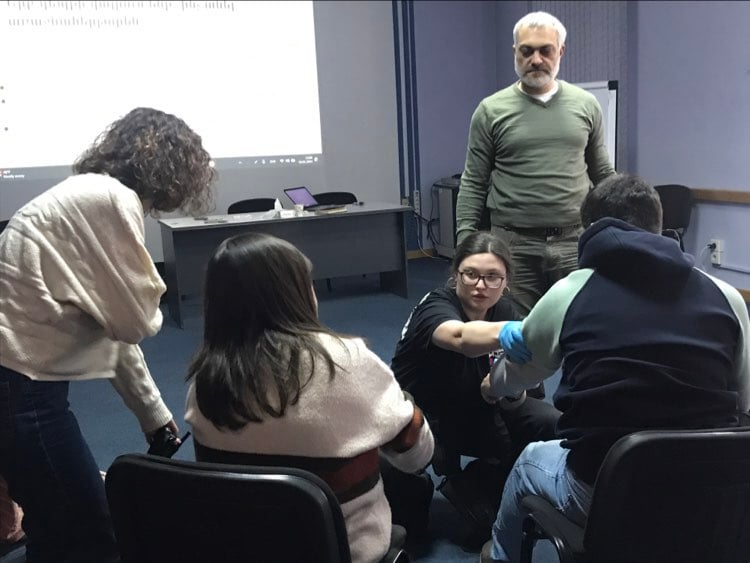
Hayarpi Baghdasaryan during the training
Hayarpi selected the safety of journalists in a war situation as the topic for her training course. The course was conducted for the first time in their editorial office. She developed an action plan outlining how Infocom should operate in such circumstances.
Hayarpi shared that in the past, their editorial office made impulsive decisions while covering war operations and tense situations at the border. Now, her goal is to have a pre-developed action plan that will outline and guide how to approach the conflict zone, the choice of employees who are both physically and mentally prepared to work in the conflict zone, and how they will coordinate themselves and their actions in the area, and most importantly, how they will organize first aid in case of injuries.
Journalist Gevorg Tosunyan also chose to addressed the challenges during military operations’ coverage. The CivilNet journalist, who now conducts trainings, has prior experience covering military operations, including the 44-day war.
Gevorg mentions that during the training, he drew parallels with the actions he undertook during the 44-day war coverage and identified several mistakes that could have had irreversible consequences.
Gevorg also conducted the first training in their editorial office.
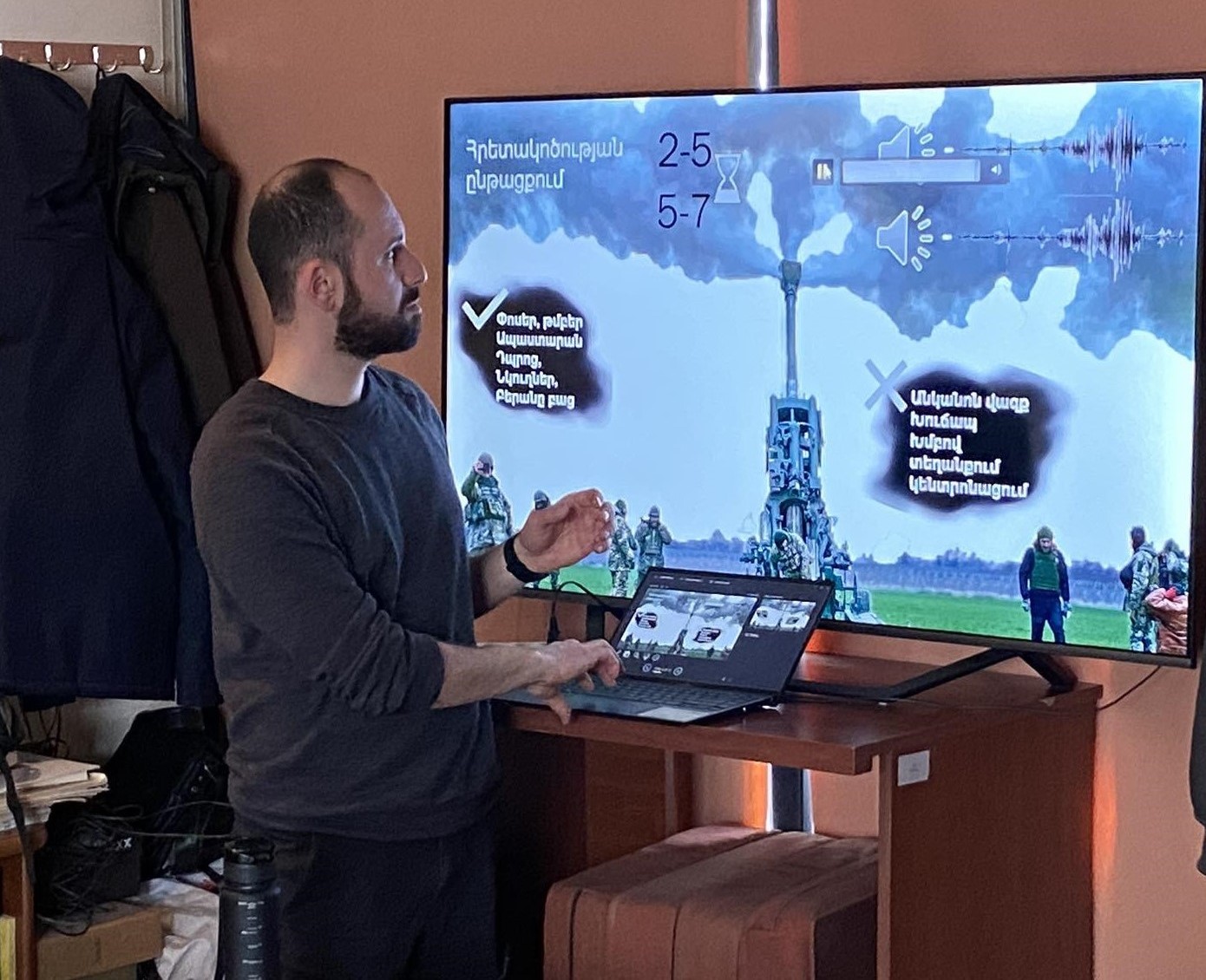
Gevorg Tosunyan during training. The photo was provided by Gevorg Tosunyan.
“Maintaining ongoing training is extremely important. My colleagues were quite enthusiastic. My project encompassed both investigative and coordination components. I introduced skills for using maps and discussed nuances such as selecting safe locations to work during military operations, which are not likely to be targeted by the enemy. I dedicated a separate section to the sounds of war, titling it ‘A Familiar Noise.’ I emphasized the importance of familiarizing oneself with sounds such as anti-aircraft fire and artillery before heading to the area of military operations, to prevent unnecessary panic,” says Gevorg.
Unlike his colleagues, Factor.am journalist Narek Kirakosyan opted to focus on issues related to journalists’ safety during protests. Prior to participating in the journalists’ safety course, he had covered numerous internal political mass demonstrations and protests.
He admits that there have been instances where, in pursuit of more engaging shots and interviews, he ventured into the heart of the protest action, compromising his safety. When developing his personal training program, Narek incorporated both the knowledge acquired during the training and the safety policy rules established by their editorial office.
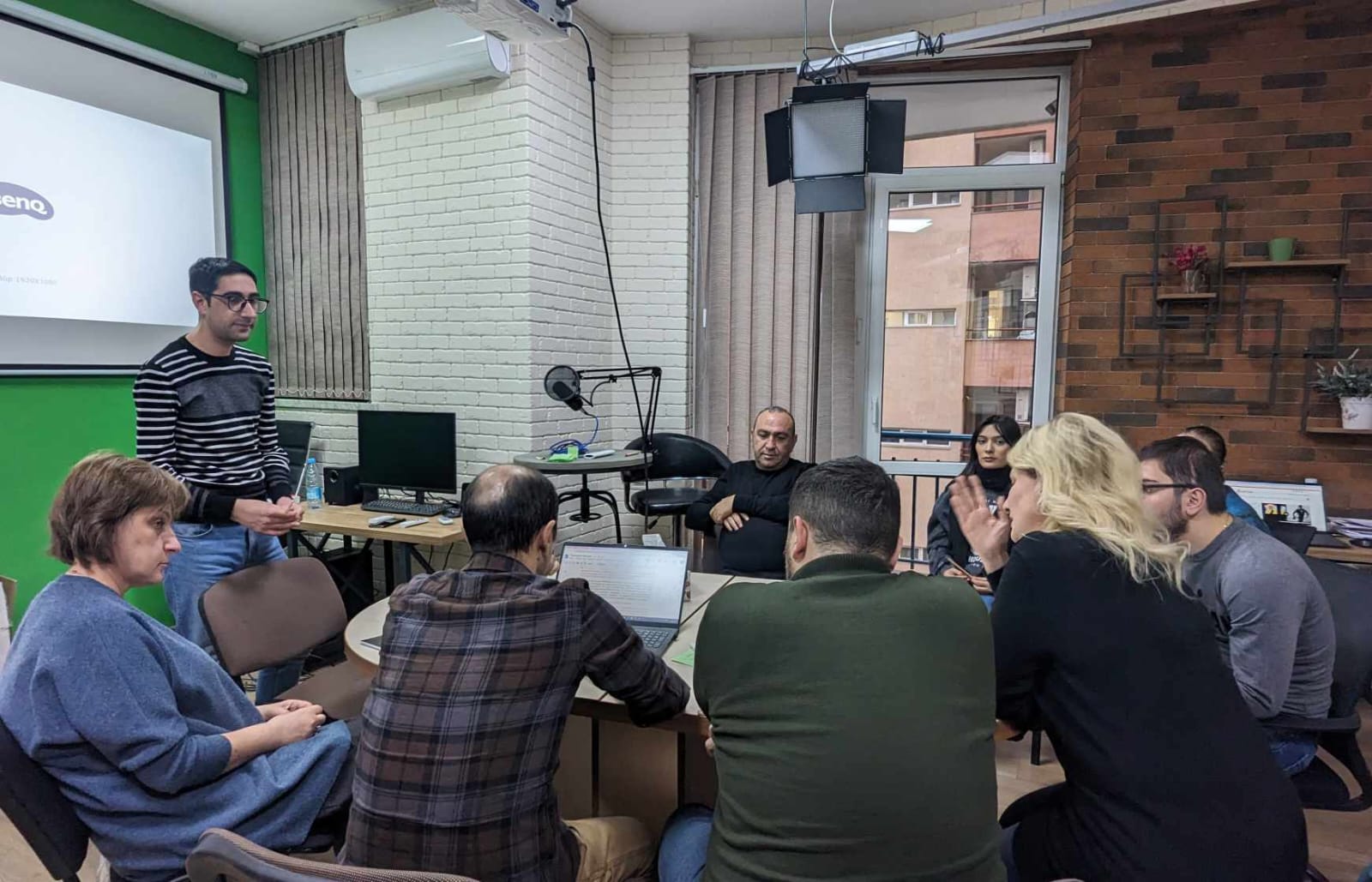
Narek Kirakosyan during the training. The photo was provided by Narek Kirakosyan.
Narek presented a training session on how the press can ensure their safety while covering tense events with large crowds. The session covered topics such as how to choose a safe location, the importance of constant contact with the editorial office, and what decisions a journalist can make on their own if they cannot contact their office. They also discussed a video that Narek had produced, where he appeared amid a protest between the police and protesters. In their training, Narek and his colleagues also experimented with a VR experience related to a protest.
While the journalist-trainers are conducting real-life trainings based on the courses they have developed, the MIC is working on gathering all these projects, consolidating them, and integrating them into one comprehensive course. This educational program will feature a developed methodology and essential educational materials, enabling editorial offices to utilize it in the future.
Marianna Danielyan
